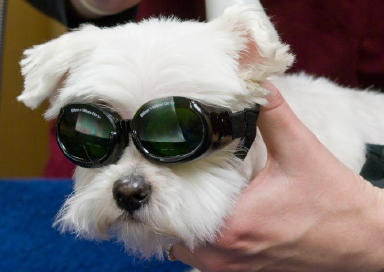The use of lasers in veterinary medicine offers several advantages over traditional methods. Here are some of the advantages of laser in the application of veterinary medicine:
1. Minimally invasive: Lasers provide a minimally invasive approach to surgery and treatment, which results in less trauma, pain, and bleeding for the animal.
2. Precision: Lasers can target very specific areas of tissue with precision, which reduces the risk of damage to surrounding healthy tissue.

3. Reduced bleeding: The use of lasers in surgery can significantly reduce bleeding, making the procedure safer for the animal.
4. Reduced swelling: Lasers can help to reduce swelling and inflammation in affected areas, leading to a quicker recovery time for the animal.

5. Faster healing: The use of lasers in veterinary medicine has been shown to speed up the healing process in animals, reducing the need for prolonged hospital stays and allowing for a faster return to normal activities.
6. Reduced pain: Laser therapy can help to reduce pain and discomfort in animals, making it a valuable tool for managing chronic conditions such as arthritis.

7. Versatility: Lasers can be used in a variety of veterinary applications, including surgery, wound healing, pain management, and dental procedures.
Overall, the use of lasers in veterinary medicine has been shown to be a safe and effective alternative to traditional methods, providing a minimally invasive approach that results in less pain, bleeding, and trauma for the animal.